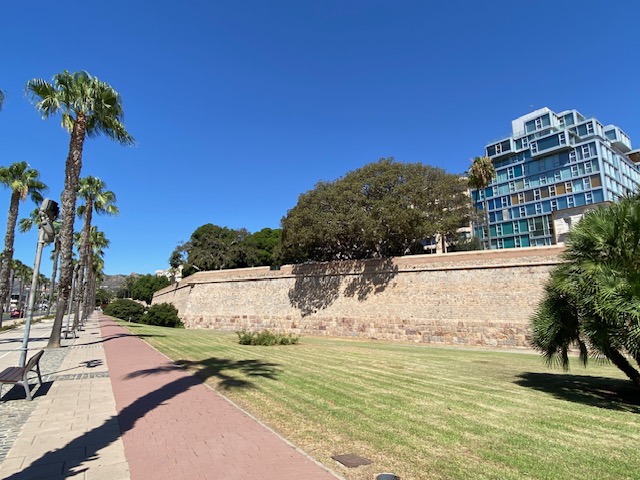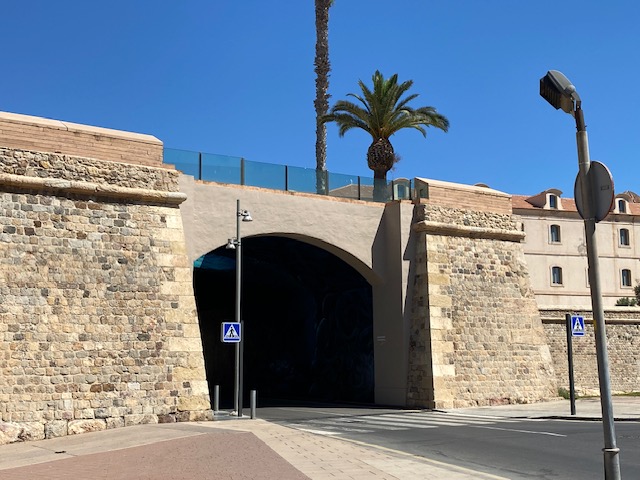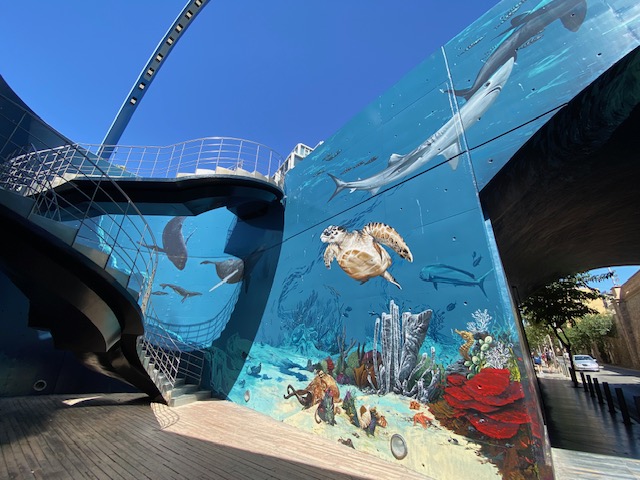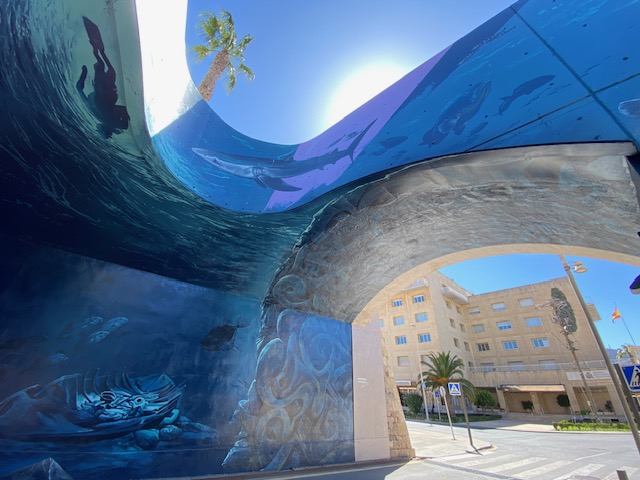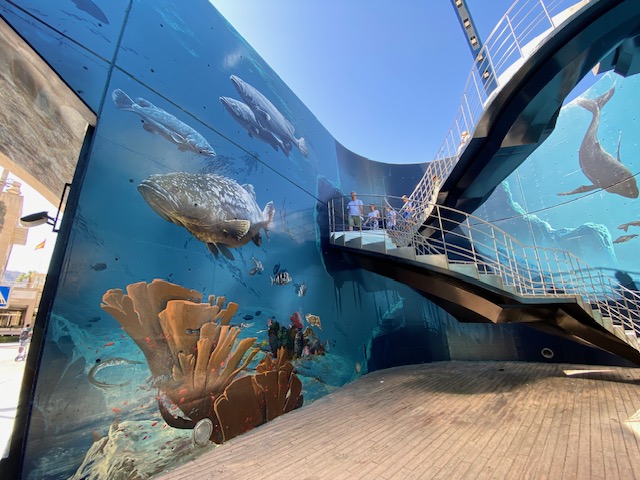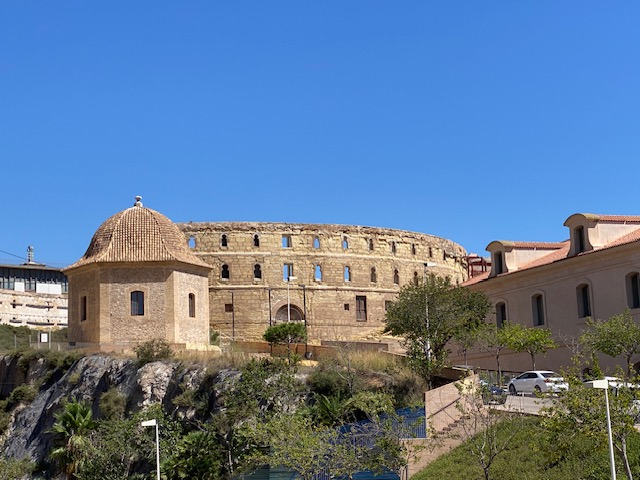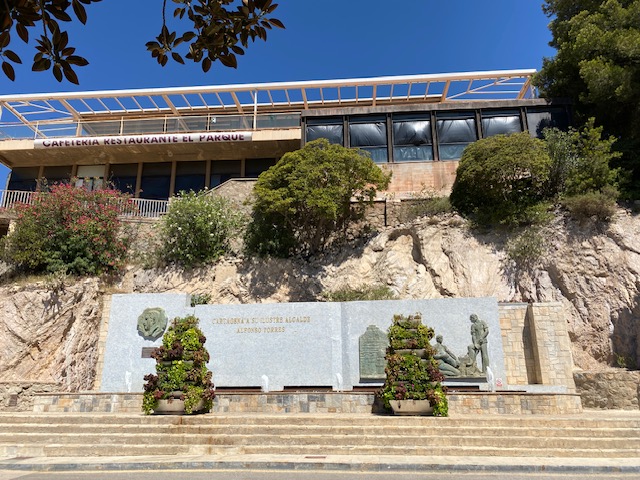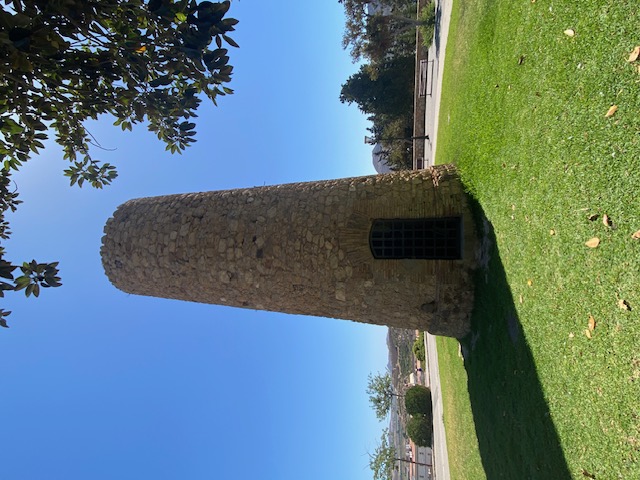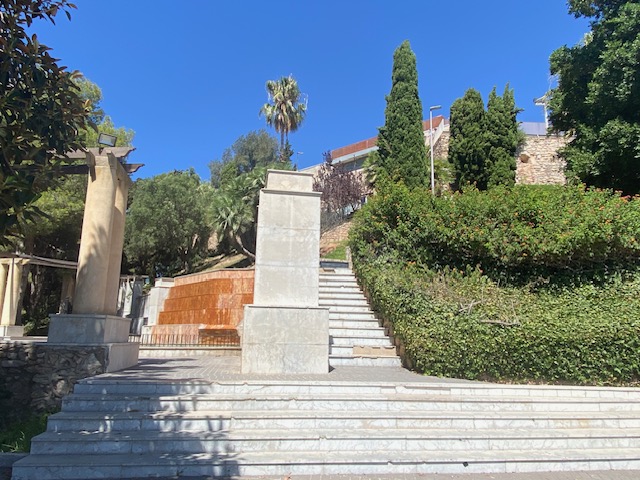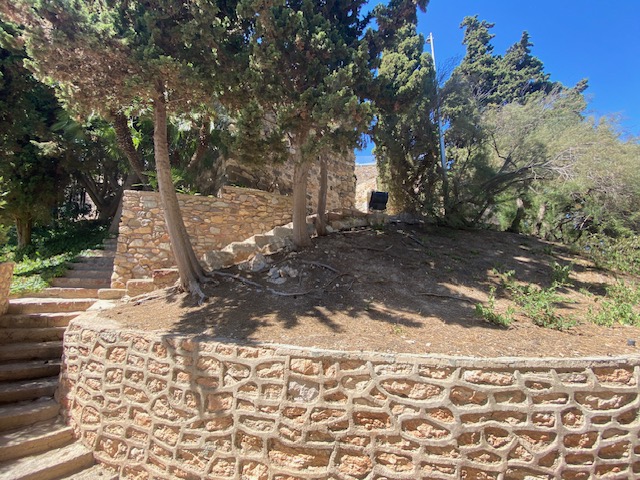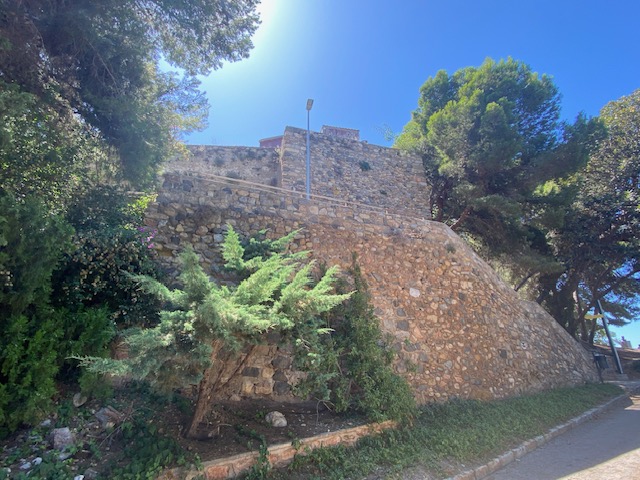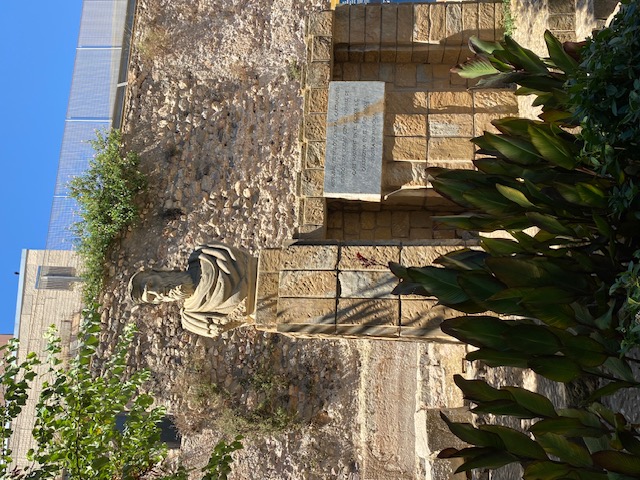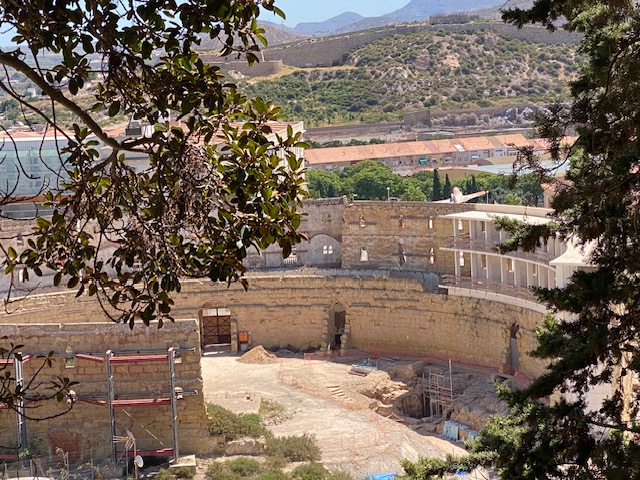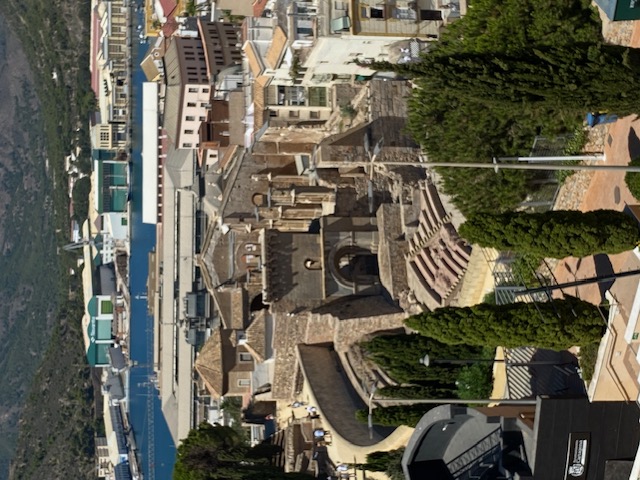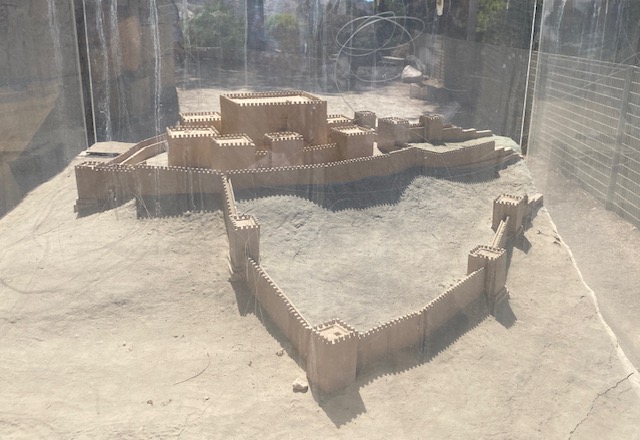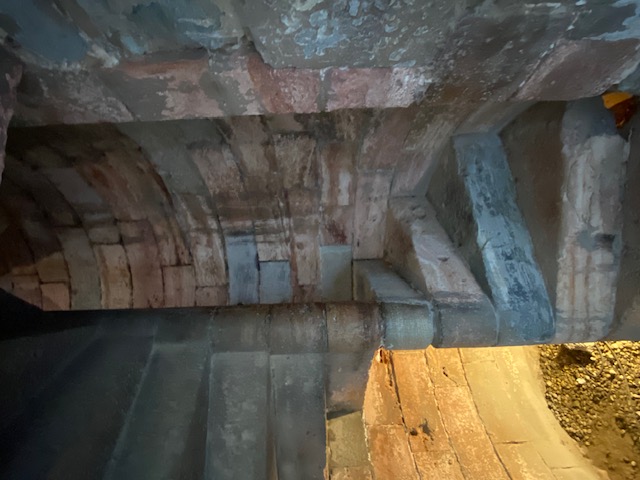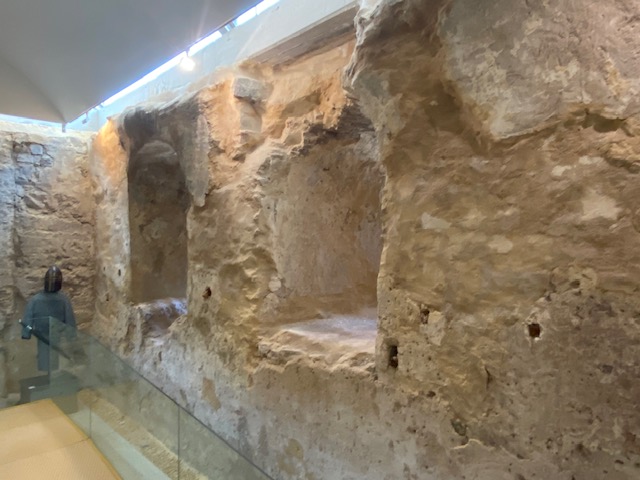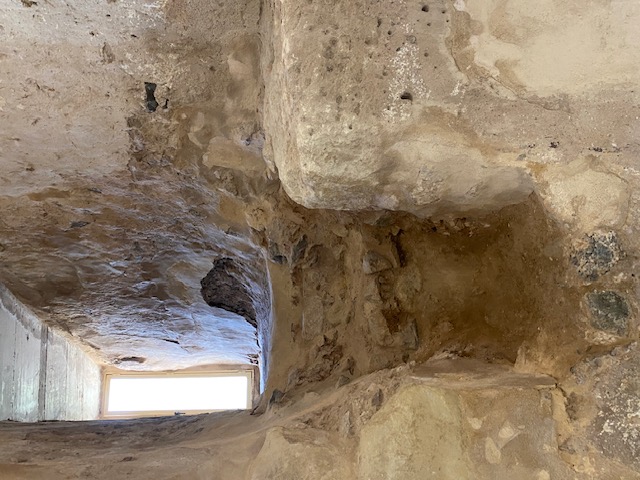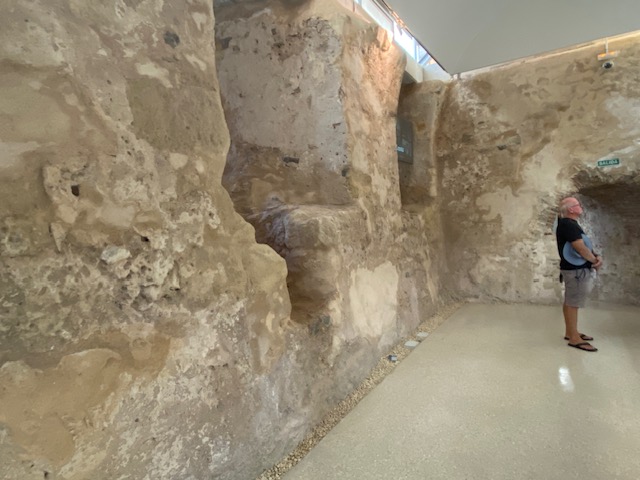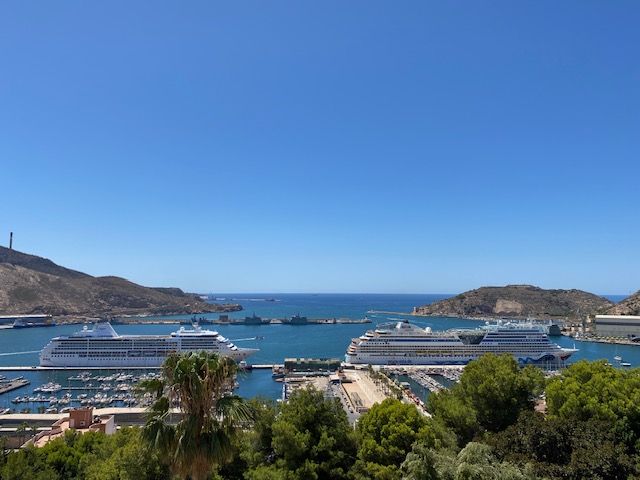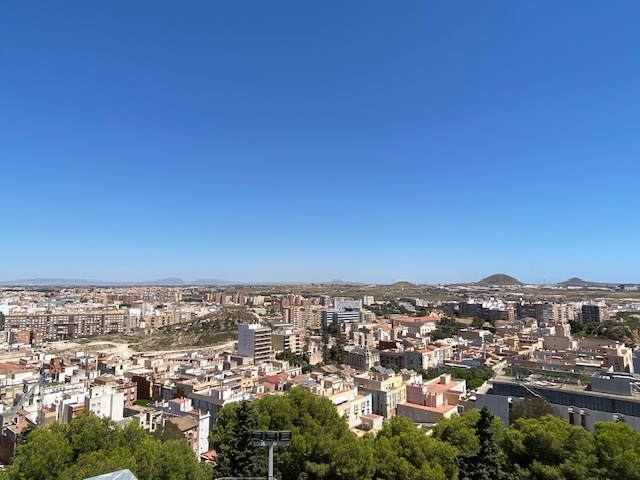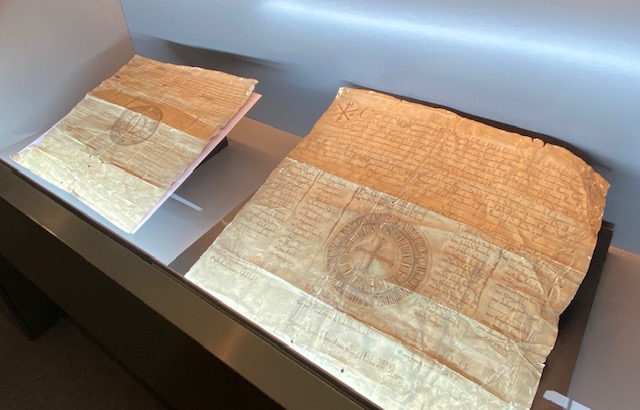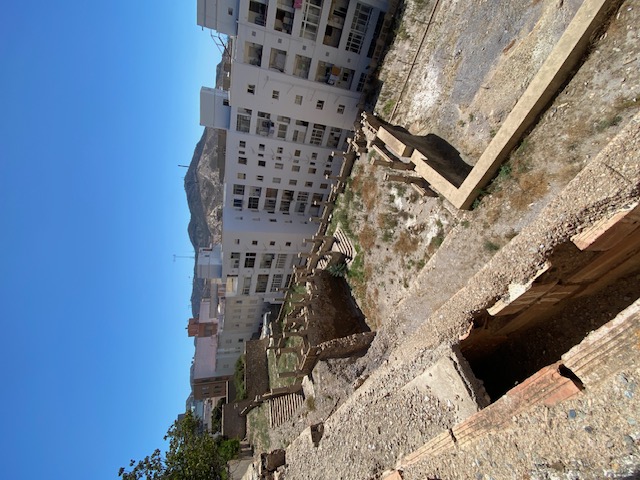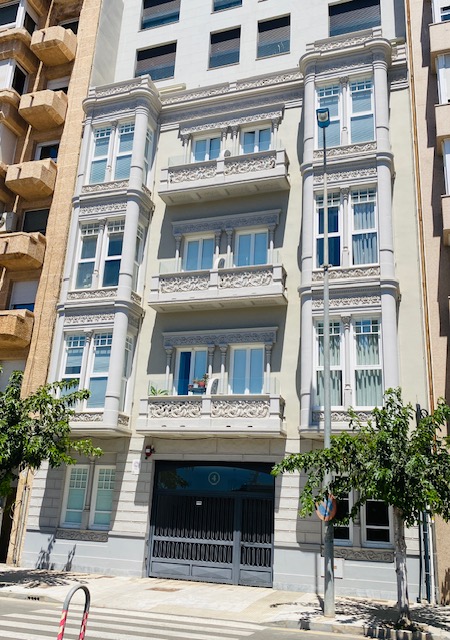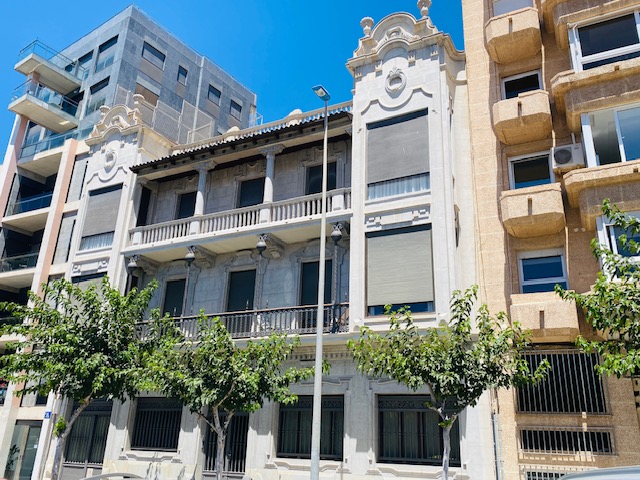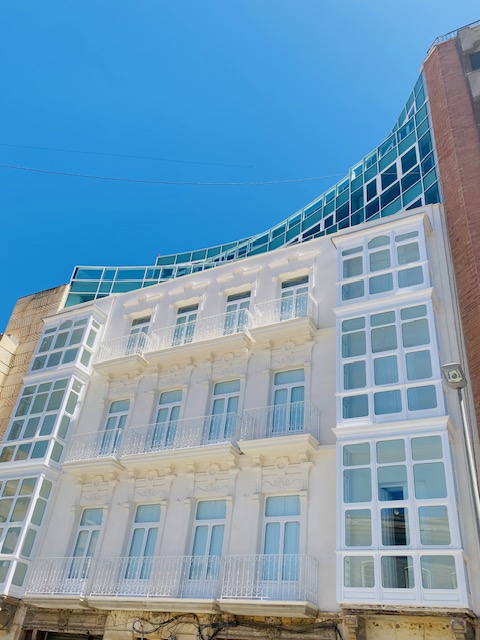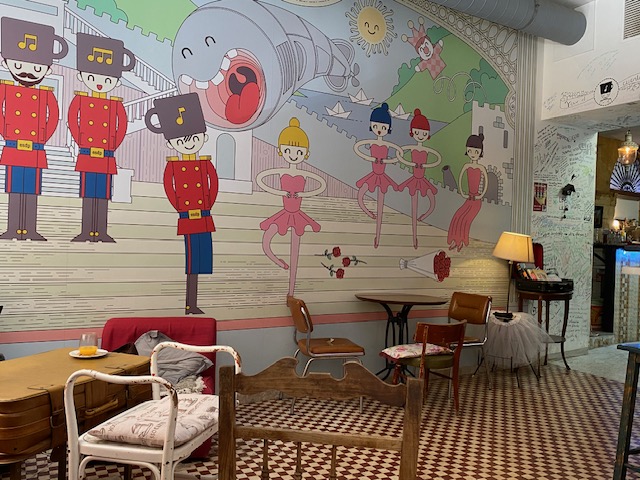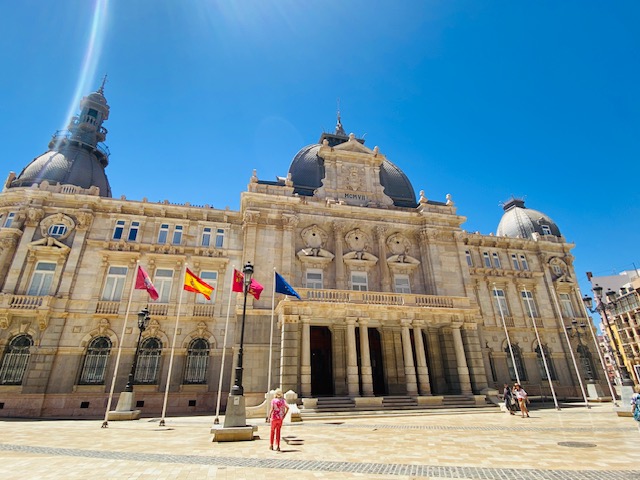After huffing and puffing all the way up the streets and steps leading to the castle grounds, we continued to huff and puff up to the castle itself and to the tower, in particular. Fortunately there were enough wheelchair ramps so Elaine didn’t have to negotiate all the steps, but there were enough steps nonetheless.
En route we passed a number of historic sites, including “Muralla de Carlos III” (The Wall of Carlos III), a defensive wall built around the old city, at the request of King Carlos III and constructed from 1771-1781, part of which still stands near the marina, “Escalera en Caracol” (The Spiral Staircase), which had fantastic murals resembling an aquarium, as well as the Autopsy Pavilion; a rather strange name for this construction built in 1768, but, as the name implies, it was originally part of the Royal Navy Hospital, where student surgeons took their anatomy classes. We could also see “Castillo de San Julián” to the east overlooking the harbour.
Once we reached the top of “Castillo de la Concepción”, we enjoyed fabulous views and could see the full extent of the enormous natural harbour, as well as the old town, which revealed more historic sites, including the Bullring and Roman Amphitheatre, the ruins of the Santa Maria Cathedral, destroyed during the Spanish Civil War and Moros Castle. As a backdrop, the more modern high-rise residential areas stood in the distance.
After leaving the castle we walked along some of the backstreets, noticing beautifully restored old buildings set in amongst the numerous modern buildings, as well as hidden ancient ruins between the high-rises, most probably missed, but peering over a wall or two, revealed them.
A coffee and baked delight was enjoyed at a very quirky café just off the main square, called “El Soldadito de Plomo” (The Tin Soldier), quirky due to the mural and the furniture, as well as all the deliberately mismatched crockery; a large leather suitcase served as a table, a cut out bathtub was used as a sofa, a ballet tutu as a lampshade, to mention just a few of the quirks; very creative!
Walking back along “Plaza Héroes de Cavite”, passing City Hall on the way, we returned to Paw Paw, both in need of an afternoon nap.
Cartagena was founded in the 3rd Century BC, around 223 BC, by the Carthaginian general, Hasdrubal, the Fair, hailing from Carthage, a settlement in what is now Tunisia, that later became a city-state and then an empire. Founded by the Phoenicians in the 9th Century BC, Carthage reached its height in the 4th Century BC as one of the largest metropolises in the world and the centre of the Carthaginian Empire, a major power in the ancient world that dominated the western and central Mediterranean Sea, but was subsequently conquered by the Romans in 209 BC.
Arab sources refer to Cartagena as “Qartayanna al-Halfa”, the translation of its Latin name, “Carthago Spartaria”. From the 10th Century muslim travellers and geographers underlined the importance of its port. The walled medina was built around the hill of La Concepción, the highest and closest to the port. At the top stood the fortress; the town's most important fortified enclosure. Historical text mentions the existence of a mosque as well and areas of a necropolis, with the characteristic graves facing towards Mecca, have been found on the outskirts of the town.
During the 12th Century the Kingdom of Murcia was ruled by the Almohad Caliphate, a North African berber muslim empire. At its height, it controlled much of the Iberian Peninsula and North Africa.
In 1245 the city was conquered by the armies of Prince Alfonso of Castile (the future King, Alfonso X, the Wise), who was the descendent of the last family to hold the crown of the Holy Roman Empire of the German Nation, following which christians began to settle in the city. In 1272 Alfonso X founded the Military Order of Santa Maria of Spain, an order with a clear seafaring vocation and whose convent headquarters were located in Cartagena.
At the time of Cartagena’s incorporation within the Crown of Castile, like the rest of the Kingdom of Murcia, it was a border town facing potentially hostile states: Granada, Aragon and North Africa. That meant that life for the new Christian settlers was not easy, but tax benefits and the possibility of upper social and economic mobility encouraged people to settle in Cartagena. However, since the Castilians had difficulty in repopulating the abandoned muslim town with christians, “Castillo de la Concepción” was never finished, but what existed was still the main defensive element of the city during the 16th and 17th Centuries.
The establishment of the Bishopric of Cartagena re-launched the importance of the town and enabled it to benefit from the advantages of the fact that it housed the powerful Episcopal government. The new diocese covered an extensive territory from the Spanish south-east, the site of the Kingdom of Murcia.
In 1478 the Tribunal of the Holy Office of the Inquisition was created, an institution to maintain Catholic orthodoxy in their kingdoms. Profession of the Catholic faith entailed adherence to the monarchy and its most important objective: political unity. For this reason the Edict of Expulsion of the Jews was signed by the monarchs on 31 March 1492. The directive ordered all those who did not renounce Judaism and who were not baptised, to be expelled. Cartagena was an important port through which the Jews left the states of the Catholic Monarchs, most of who then settled in North Africa, Portugal and the Italian states.
After the Catholic Monarchs solidified the political unity of Spain with their religious unification project and the Act of 12 February 1502, the expulsion of the Mudejar began.
The vast majority of Mudejars chose to convert, were baptised and became christians by law, but remained muslims in consciousness and culture. It was then that the Mudejars became known as Moriscos. However, the new issue of religious unification was not resolved until 1609 by King Philip III, who ordered the expulsion of all Moriscos from the Iberian Peninsula.
The most significant reason for the expulsion was the possible alliance of the Moriscos with the Turks and Berbers, who were constantly attacking the coasts of Cartagena and the Spanish Levante.
The Kingdom of Murcia was the last Morisco stronghold in Spain. In 1613, thousands of Moriscos embarked at the port of Cartagena heading to North Africa, where the flow of expelled individuals was soon rerouted to the French and Italian ports.
Dinner was supposed to be a barbecue, but unfortunately, other than the house propane bottle, we’d run out of propane. It wasn’t too much of an inconvenience, though; Roy just used the oven grill instead.
Before dinner we also changed our sailing itinerary, yet again. Instead of heading to Almerimar, we decided to make more use of the daylight on either side of the overnight sail and continue on to Motril to take us further down the Spanish coast, saving us three separate day hops. An overnight passage meant an early start, so it was early to bed too.
